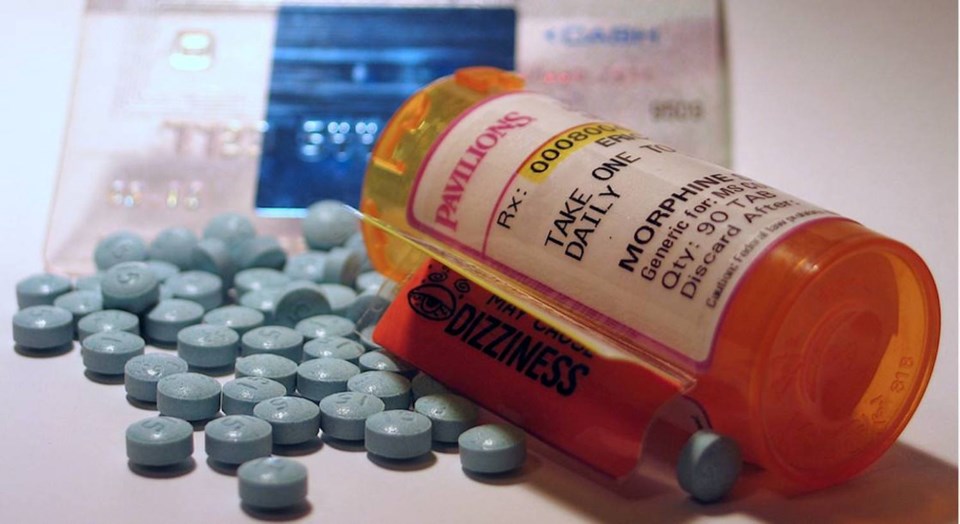The province is currently accepting applications for what they're calling "temporary overdose prevention sites" in Sudbury.
These would be safe injection sites for intravenous drug users located, temporarily, with health care organizations or groups, or community-based organizations that support harm reduction and work with people who use drugs, and the government is looking for groups that fall into those categories to apply.
These temporary sites would operate for between three and six months based on need, and funding would be provided by either the Ministry of Health of the Local Health Integration Network (LHIN). Drug users would then benefit from supervised injections, harm-reduction supplies, including disposal of used supplies, and naloxone, a medication used to block the effects of opioids, especially in instances of overdose.
"An overdose prevention site is meant specifically for preventing opioid overdoses or for those drugs that are thought to be contaminated with opioids, because as we know, our illicit drug supply is not regulated and can be cut with very powerful opioids that can result in overdose," said Dr. Ariella Zbar, associate medical officer of health with the Sudbury and District Health Unit (SDHU).
"This is meant in response to the opioid overdoses that have been seen in the province and these sites allow for supervised injection or even supervised oral consumption of the drugs."
Overdose prevention sites that meet the necessary criteria will be approved to operate for three to six months, with the possibility of extension.
Organizations must go through and pass an application process to operate one of injection sites. Criteria include having at least two staff members who can provide naloxone, who know CPR and first aid, and at least one person must be a designated health professional.
Sites like these have been popping up around the province, operating as unsanctioned overdose prevention sites. One of them is a 40-foot trailer in Toronto's Moss Park that was provided by CUPE after starting out as nothing more than a makeshift tent.
"This follows the same kind of model, but it's done in a more systematic way in terms of applying for it," Zbar said. "It can be run out of an existing brick and mortar location ... it can even be run out of a trailer, as long as we as public health workers are making sure that they're following prevention and control guidelines, and is in a location that is accessible to those who will be using the service."
As of publication time, the Ministry of Health has not received an application from any Sudbury-based organizations for a temporary overdose prevention site, but Zbar says that there are organizations that might be interested, including Sudbury Action Centre for Youth (SACY) and Réseau Access Network Sudbury.
The application itself looks at the burdens of opioid use on a community, along with overdose numbers and the number of people that would be accessing the site.
"In terms of people at risk of an overdose who would be using this site, I can't really give exact numbers, but we know from our emergency department visits that we see a few dozen on a month to month basis," said Zbar.
"That's likely an underestimate because this only reflects people who are going to the emergency department and there are people who overdose and don't go to the emergency department."
Ontario Health Minister Eric Hoskins said that the province is doing "everything in their power" to combat opioid overdoses.
“Every life lost to this opioid crisis is an avoidable tragedy and our government is committed to doing everything in our power to combat this public health crisis," said Hoskins. "Overdose prevention sites have proven to save lives by offering necessary health services to some of the most vulnerable and marginalized populations.”
While sites like this serve a valuable purpose, Zbar says it's important to note that they operate as standalone sites, unlike supervised injection sites which are integrated into primary care and provide access to mental health and addiction services.
"They're really functioning on their own, so it's meant to address the overdose, but in terms of linking with mental health and addictions, linking with primary care, getting to those other needs that naloxone doesn't reverse, that's not being provided," said Zbar.
"It's a tool to be used in how we're working to reduce opioid use and opioid-related harm in our community, but it's not a solution."
For the community organizations that are approved for a temporary overdose prevention site, the level of assistance and funding from the province is determined on a case-by-case basis that looks at a number of factors.
"Naloxone will definitely be provided, but as far as other resources, that's a conversation that's had on a case-by-case basis," said Laura Gallant a spokesperson with the ministry. "It depends on who the agency is, what they already have, how much change is needed and how ready they are to operate an overdose prevention site."
For more information on how to obtain provincial approval and funding to open a site, organizations are encouraged to review the Overdose Prevention Sites: User Guide for Applicants.
The guide also outlines eligibility and program delivery requirements, and the criteria used to assess each application.
